APR scores show state needs better system

The long-awaited 2018 school performance reports have finally been released.
As soon as the data was released on Feb. 1, media outlets helped school districts across the state proclaim victory based on the new scores.
But the headlines, like the state’s Annual Performance Report (APR) itself, hide an ugly truth about the state of education in Missouri.
APR vs Student Achievement
APR scores are confusing and the result of
The manual for understanding how the score is calculated is 93 pages long.
The final score is not just an accounting of how much students in a district are learning but also a wide variety of factors including attendance, graduation rates, and college and career readiness.
Districts can get up to 120 points for their APR with only 50 of those points coming from actual student achievement. In comparison, they get 30 points for graduation, 10 points for attendance, and 30 points for college and career readiness.
Finding the data on actual student achievement
It takes some work to find the data on student academic performance on the Department of Elementary and Secondary Education’s website. You have to click on a tiny “C
After doing all of that you end up with data on how students performed on the statewide tests given last spring. Why we are only getting this data at the beginning of February, just weeks before some students start taking the same tests for this year, is a
Before talking about the actual test data, it is important to understand some issues with the data
- Missouri has changed its tests every year for the past three years, so none of this data is comparable to previous years. You can only compare a district to how the state as a whole did (spoiler alert: the state did not do well).
- The test scores are a snapshot of how students did on a single test. This means it gives some data about what a student knows, but not how much they are learning or how quickly and efficiently they are progressing.
- The tests given this year were considered to be harder than previous tests. They tested the same material but were written in a way that required more critical thinking. Since this was the first time the tests were given the state had to set cut levels for classifying how students did and state officials said they set those levels higher than in previous years.
What the student achievement data shows statewide
If you look at the APR scores, Missouri schools are doing great. Statewide, 97 percent of the districts had an APR score high enough to be considered fully accredited. This includes districts like Kansas City, St. Louis City, and Riverview Gardens.
But the test scores tell a very different tale. State test score results are broken down into four categories, Below Basic, Basic, Proficient, and Advanced. Proficient is considered a passing grade.
Statewide only 49.2 percent of students scored proficient in English Language Arts (ELA) and only 42.1 percent scored proficient in math.
Think about that for just a minute.
In a state with 97 percent of its schools classified as fully accredited, less than half of the students passed the state test for both ELA and math.
What it means at the district level
The story gets even worse when you start looking at individual districts. Remember we can only compare the scores of a district to the statewide results (a low bar of less than half of the students passing) since this is a new test.
Kansas City
In Kansas City, the Kansas City Star headline on Feb. 1 was: “Kansas City school district celebrates its highest state performance score ever”
This is true, their APR score was 99.5 points out of a possible 120 points. 55.5 of those points came from factors unrelated to actual student academic performance.
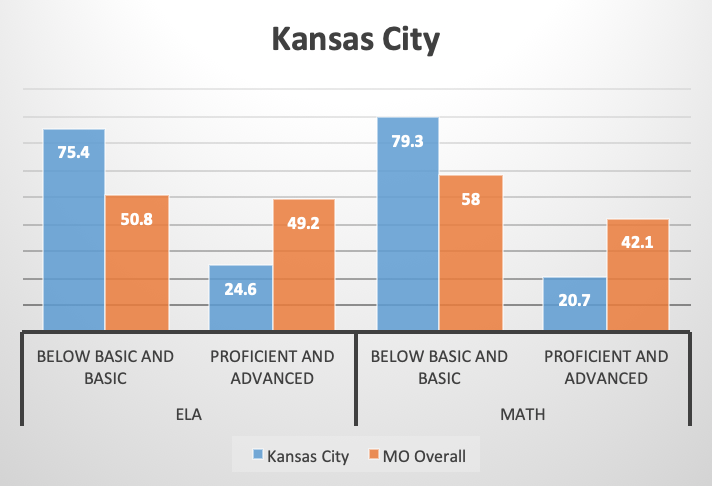
When you dial down to the actual test data, only 24.6 percent of Kansas City students were proficient or advanced in ELA and only 20.7 percent of students were proficient or advanced in math. Less than a quarter of the students were able to pass ELA and math.
St. Louis region
In St. Louis, the KMOV headline on Feb. 1 was: “Newly-released Missouri school reports show mostly positive strides being made in St. Louis area”
St. Louis City’s APR score was 94.2 points out of a possible 120 points. 55.5 of those points came from factors unrelated to actual student academic performance.
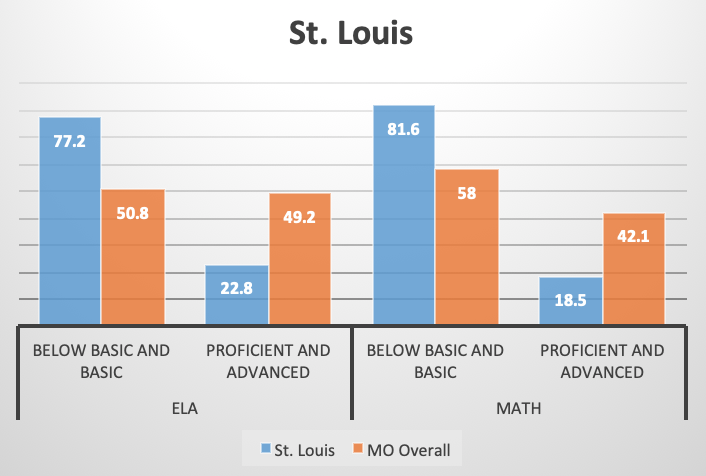
Only 22.8 percent of St. Louis students were proficient or advanced in ELA and only 18.5 percent of students were proficient or advanced in math.
Riverview Gardens’ APR score was 90.3 points out of a possible 120 points. 56 of those points came from factors unrelated to actual student academic performance.
Only 17.9 percent of Riverview Gardens students were proficient or advanced in ELA and only 12.5 percent of students were proficient or advanced in math.
Normandy’s APR score was 81 points out of a possible 120 points. 48 of those points came from factors unrelated to actual student academic performance.
Only 19.8 percent of Normandy students were proficient or advanced in ELA and only 12.6 percent of students were proficient or advanced in math.
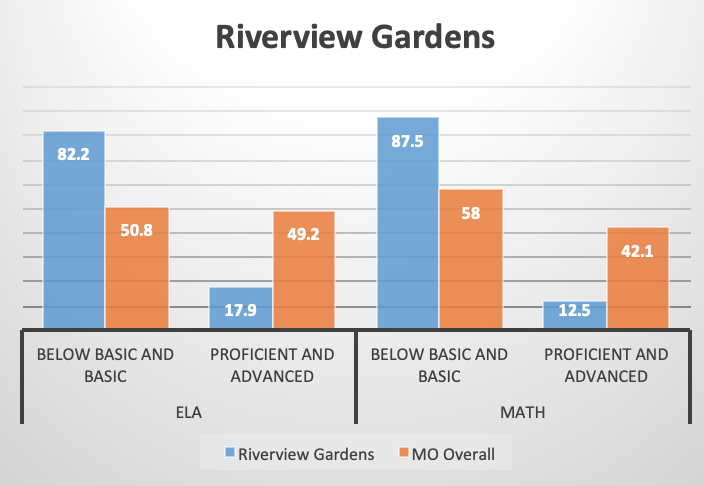
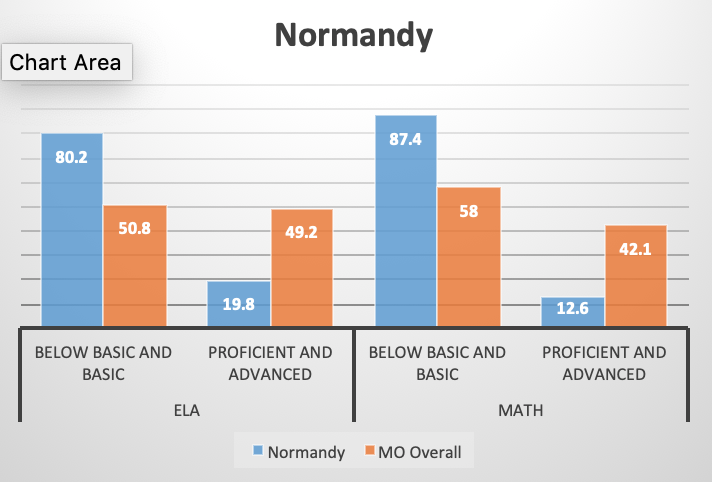
Columbia
In Columbia, the Columbian Missourian headline on Feb. 1 was: “Assessment data released; Columbia Public Schools receives high marks”
This is true, their APR score was 112 points out of a possible 120 points. 67 of those points came from factors unrelated to actual student academic performance.
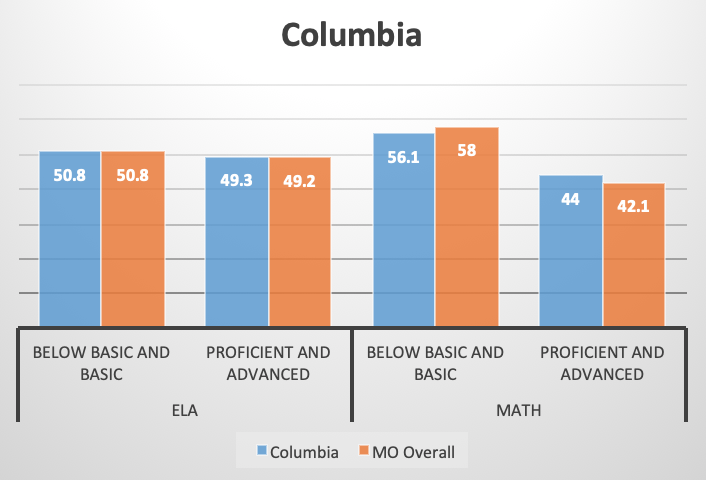
Compared to the rest of the state, when you look at the actual test data Columbia did pretty well, 49.3 percent of Columbia students were proficient or advanced in ELA and 44 percent of students were proficient or advanced in math. These numbers matched or exceeded the state average, but
Jefferson City
In Jefferson City, the KRCG headline on Feb. 1 was: “Jefferson City Public Schools academic performance excels for
Like Columbia, this statement is true within the limited scope of comparison to the state. Jefferson City’s APR score was 105.5 points out of a possible 120 points. 57.5 of those points came from factors unrelated to actual student academic performance.
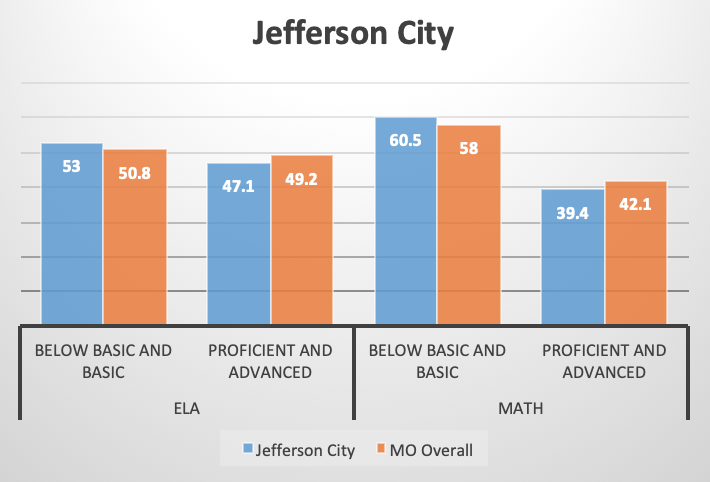
47.2 percent of Jefferson City students were proficient or advanced in ELA and 39.4 percent of students were proficient or advanced in math. It hard to make an
Joplin
In Joplin, the Joplin Globe headline on Feb. 1 was: “Area schools post strong numbers in state reviews”
Joplin’s APR score was 103 points out of a possible 120 points. 54 of those points came from factors unrelated to actual student academic performance.
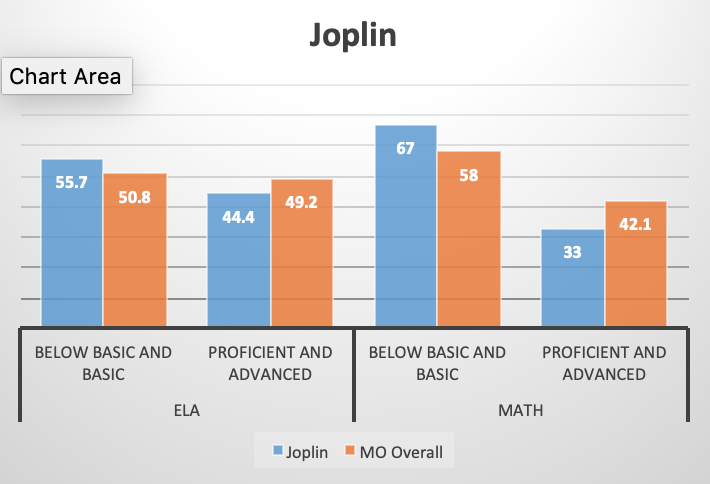
44.4 percent of Joplin students were proficient or advanced in ELA and only 33 percent of students were proficient or advanced in math.
Springfield
The Springfield News-Leader had one of the most critical and most realistic headlines: “In every grade, SPS students below
Springfield’s APR score was 102.7 points out of a possible 120 points. 57.5 of those points came from factors unrelated to actual student academic performance.
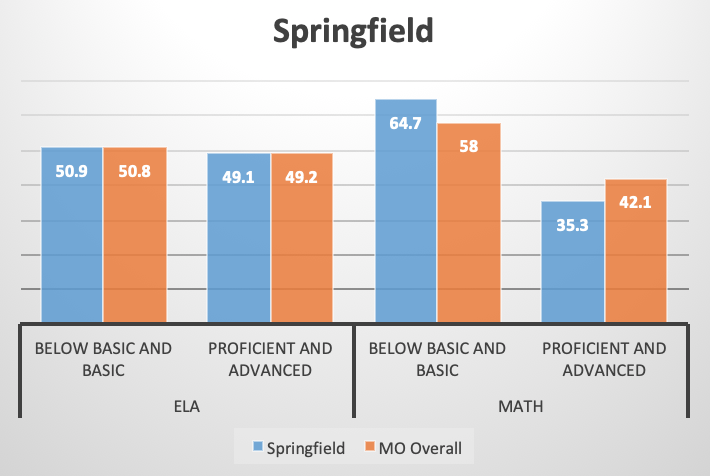
Springfield matched the state in ELA with a 49.1 percent of their students scoring proficient or advanced, but as the New-Leader pointed out, they trailed the state average with only 35.3 percent of their students proficient or advanced in math.
What does this all mean?
It is clear that we have work to do in Missouri when it comes to student achievement. The state average of students passing ELA and Math must improve. And many districts have even more work to do.
But beyond those key issues, the release of the 2018 APR scores and test results makes it clear that we need a much better way of evaluating our schools and getting that information to parents.
If you went by the headlines in almost every metro area on Feb. 1 you would think that everything is perfect in our education world. The numbers show that is simply not true.
Additional information
Both the St. Louis Post-Dispatch and St. Louis Public Radio did an excellent job of looking past the deceiving APR scores. Check out their coverage for more information:
- What Your School’s Report Card Actually Means Is ‘Pretty Confusing’
- Missouri students bomb new, harder test; State promises no more changes
« Previous Post: ESAs moving in state Senate
» Next Post: Missouri asks for access to charter schools